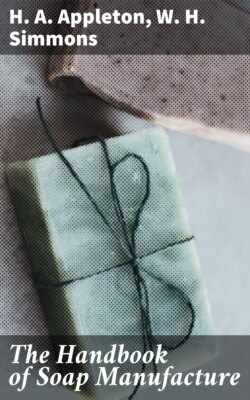Читать книгу The Handbook of Soap Manufacture - H. A. Appleton - Страница 3
На сайте Литреса книга снята с продажи.
PREFACE
ОглавлениеTable of Contents
In the general advance of technical knowledge and research during the last decade, the Soap Industry has not remained stationary. While there has not perhaps been anything of a very revolutionary character, steady progress has still been made in practically all branches, and the aim of the present work is to describe the manufacture of Household and Toilet Soaps as carried out to-day in an up-to-date and well-equipped factory.
In the more scientific portions of the book, an acquaintance with the principles of elementary chemistry is assumed, and in this we feel justified, as in these days of strenuous competition, no soap-maker can hope to compete successfully with his rivals unless he has a sound theoretical as well as practical knowledge of the nature of the raw materials he uses, and the reactions taking place in the pan, or at other stages of the manufacture. We also venture to hope that the work may prove useful to Works' Chemists and other Analysts consulted in connection with this Industry.
At the same time, in the greater part of the book no chemical knowledge is necessary, the subject being treated in such a way that it is hoped those who are not directly engaged in the manufacture of soap, but who desire a general idea of the subject, will find it of value.
In the sections dealing with the composition and analysis of materials, temperatures are expressed in degrees Centigrade, these being now almost invariably used in scientific work. In the rest of the book, however, they are given in degrees Fahrenheit (the degrees Centigrade being also added in brackets), as in the majority of factories these are still used.
As regards strengths of solution, in some factories the use of Baumé degrees is preferred, whilst in others Twaddell degrees are the custom, and we have therefore given the two figures in all cases.
In the chapter dealing with Oils and Fats, their Saponification Equivalents are given in preference to Saponification Values, as it has been our practice for some years to express our results in this way, as suggested by Allen in Commercial Organic Analysis, and all our records, from which most of the figures for the chief oils and fats are taken, are so stated.
For the illustrations, the authors are indebted to Messrs. E. Forshaw & Son, Ltd., H. D. Morgan, and W. J. Fraser & Co., Ltd.
W. H. S.
H. A. A.
London, September, 1908.
